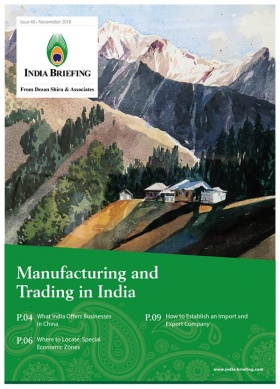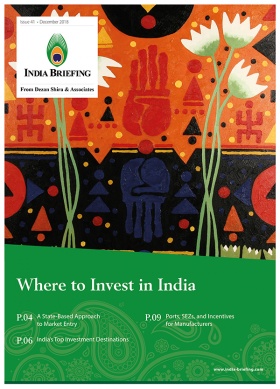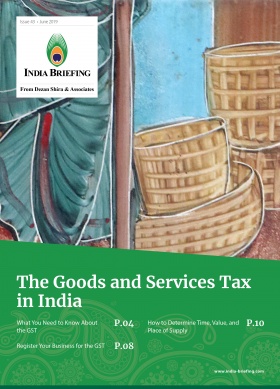Developing Global Free Trade: Linking India with Mercosur and the EAEU
(Part 2 of a 5 Part BRICS/EAEU Free Trade Series)
Opportunities for Indian businesses across more distant emerging free trade areas.
Op/Ed By Chris Devonshire-Ellis
Indian Prime Minister Narendra Modi has just returned from Brazil and the annual meeting of BRICS nations held in Brasilia. With the Presidents and Prime Ministers from Brazil, China, Russia, and South Africa also all attending, the scene has been set for Russia’s stint as the BRICS Chair in 2020, which is six weeks away.
President Putin has already stated that he wishes to use Russia’s Chairmanship of the BRICS grouping to further enhance its status within the UN. Meanwhile, the Brasilia Summit’s Declaration, agreed to by all member countries, including India, states that the BRICS bloc had expressed common goals of “expanding trade and innovation.”
There are significant global trade issues to examine here: most notably exactly how such trade can be increased. At present, the BRICS countries represent over 3.1 billion people, or about 41 percent of the world population.
As of 2018, these five nations have a combined nominal GDP of US$18.6 trillion, about 23.2 percent of the global total, a combined GDP (PPP) of around US$40.55 trillion (32 percent of world’s GDP PPP) and an estimated US$4.46 trillion in combined foreign reserves. The IMF has projected that the BRICS nations will account for over 50 percent of global GDP by 2030.
Achieving that growth will require some planning and innovation on the part of the countries concerned. This can reasonably be expected to include advancing free trade agreements. To this end, India is a leading player in the South Asian region, with its influence and membership of the South Asia Free Trade Area (SAFTA), while Russia plays a similar role in the development of the Eurasian Economic Union.
South Africa is a major strategic partner in the Southern African Development Community (SADC). China, although it alone isn’t a dominant player in a specific free trade grouping, does of course have the Belt and Road Initiative. What the BRICS grouping does do, is potentially provide a common bloc through which other free trade blocs can be added.
Although BRICS itself is not a free trade grouping, its prominence and intended actions almost certainly mean it is a platform for instigating just that – and the BRICS 2019 Brasilia Declaration expressed exactly this scenario.
In this series of articles, I will examine each of the possible scenarios that may occur in the development of free trade within the BRICS nations. In this article, I focus on India.
Part Two: The South Asia Free Trade Area (SAFTA) and the Eurasian Economic Union
Somewhat overshadowed by its larger neighbor ASEAN, SAFTA is a free trade bloc and includes Afghanistan, Bangladesh, Bhutan, India, Maldives, Nepal, Pakistan, and Sri Lanka. It includes a market of 1.6 billion people and is meant to have reduced the customs duties on all goods traded between members to zero.
However, each of the member states maintain a “sensitive” list of products not included among the free trade, which has largely negated the impact of SAFTA, absolving about 36 percent of all traded products from the agreement. In addition to this, each member state has created “para tariffs,” which are a variety of duties applied only to imports and not to domestic production. In effect, these are tariffs under another name.
Vested interests apply, and thus far, imposing countries have been able to keep para tariffs outside the ambit of free trade negotiations. That is a shame, as World Bank commissioned reports have shown that intraregional trade has the potential to triple from its current volume of US$23 billion to around US$70 billion should these barriers be removed.
Until SAFTA manages to sort out regional self-interests, the bloc will remain both largely ineffective, under-utilized, and unable to expand or develop further. It certainly will not attract any other free trade partners.
However, if circumstances allow forth a resolution, a SAFTA deal with the Eurasian Economic Union (see text below) would favor this development. Is it something politicians should be aiming for? Yes. Is it something that entrenched Indian business families with political connections will allow: No.
It remains India’s shame that it has allowed its democracy to be so abused. They will oversee a decline of foreign investment and retrenchment into traditional technological backwardness as a result.
India and Mercosur
Mercosur is the free trade area that includes Argentina, Brazil, Paraguay, and Uruguay. It is the only FTA that India currently has with a fellow member of BRICS (Brazil).
While the preferential trade agreement (PTA) between India and Mercosur is presently limited to just 450 products, the two sides have raised their ambitions and are currently negotiating preferential access to about 3,000 items.
India wants to export processed foods, more engineering goods, and a wider range of pharmaceuticals to the Mercosur. Under these circumstances, the India-Mercosur PTA can be considered a success.
In terms of actual products, under the existing agreement signed in 2009, India has brought down duties in the range of 10 percent to 100 percent on 452 items. These include meat products, chemicals, raw hides and skins, leather articles, wool, cotton yarn, glass and glassware, iron and steel, machinery and equipment, optical, photographic, and cinematographic apparatus.
India has preferential access in the Mercosur for organic chemicals, pharmaceuticals, essential oils, plastics and articles, rubber and rubber products, tools and implements, machinery items, and electrical machinery and equipment. A full text of the India-Mercosur PTA can be found here.
The advantage of Mercosur for India, and especially its wealthy, vested interest business connections, is that the Mercosur bloc is some distance away and is unlikely to pose much of a threat to domestic businesses in the Indian domestic market. This is a similar argument that may make a deal with the Eurasian Economic Union more likely.
India’s other free trade agreements
The other major FTAs that India has signed and implemented so far include the India-ASEAN Comprehensive Economic Cooperation Agreement, (CECA), the India-Korea Comprehensive Economic Partnership Agreement (CEPA), and the India-Japan CEPA.
India and the Regional Comprehensive Economic Partnership
India has also recently pulled out of the proposed Regional Comprehensive Economic Partnership (RCEP) due to problems with allowing China in as a free trade partner. It is a similar vested interest problem as to that experienced with the SAFTA deal – local businesses prefer to retain monopolies over local Indian markets and not allow foreign competition.
I wrote about the India-RCEP failure in the piece Will Delhi Substitute the RCEP for the EAEU?
India and the Eurasian Economic Union
What is happening, however, is that India is currently in the process of holding negotiations with the Eurasian Economic Union (EAEU) over a free trade deal. The EAEU comprises Armenia, Belarus, Kazakhstan, Kyrgyzstan, and Russia and sits in a geographic space that extends from the borders of the European Union to the borders of China.
The advantage for India’s competition-shy domestic businesses is that EAEU members are unlikely to provide much of a threat to their stranglehold over India’s local markets, while perhaps offering technologies to improve and at the same time open market access in Central Asia and Russia.
The EAEU has a population of 180 million and a GDP of about US$5 trillion – the latter being about the same as Mercosur.
With Indian Prime Minister Modi being the Guest of Honor at this year’s Far Eastern Economic Forum in Vladivostok, the stage has been set for increasing trade ties, especially with Russia.
The two countries have laid down a commitment to increase bilateral trade to US$30 billion by 2025, while India is in the market for Russian energy, and has shown interest in jointly developing container ships for this purpose with Russia in Yards near Mumbai and Vladivostok.
India is also a major consumer of gold and diamonds, and Russia has some of the world’s largest deposits in both. India has also offered Russia the ability to establish free trade zones in India for Russian investors.
With India also wanting to re-establish connections with Iran and Central Asia that it lost over partition and border disputes with China, it has also been instrumental in developing the International North-South Transport Corridor that sees shipping depart from Mumbai to Chabahar, then head north-east into Afghanistan and north to Azerbaijan and onto Russia itself.
With Iran also in possession of a free trade agreement with the EAEU, and India wanting to be more involved in Afghanistan’s future, the prospect of a free trade agreement between India and the EAEU looks promising.
While the EAEU is also looking at a prospective new FTA, a regional map of how the current EAEU FTA under negotiation, together with India, looks like this:
To some extent, an India-EAEU FTA deal then rides on the following points:
- Consideration that the EAEU may be less of a trade threat to India than the RCEP;
- Success in having integrated an FTA with Mercosur, a similar sized bloc;
- Ability to link into China’s Belt and Road Initiative via the EAEU without having to join it;
- Political relations with Moscow; and
- Likelihood of additional free trade potential with other prospective partners like the EAEU.
These are quantifiable points, although partially dependent upon the political landscape. India, however, does have good relations with Moscow, while at the same time wishes to keep China at arm’s length.
Others revolve around trade issues which appear to have compatibility and will become more apparent over time. Nonetheless, in the longer term, closer study is warranted. Benefits for Indian-based companies would be as follows:
- Access to Eurasian Economic Union Free Trade and Special Economic Zones to process/manufacture Indian origin products and goods for further export to EAEU nations, in addition to China;
- Access to sourcing Russian/Chinese products and goods for import back to India; and
- Mixing Indian/EAEU/Chinese products for final export to other global markets.
Clearly, product specific examination needs to be conducted concerning the viability of such an arrangement, as well as understanding the Rules of Origin and related product tariffs. Nonetheless, there is enough substance between both India and the Eurasian Economic Union to give credibility to the potential of such an alliance.
However, foreign investors in India are well advised to both pay attention to the foreign investment laws in India, and cross-examine those with the ongoing, anti-foreign attitude to accessing the domestic market.
India remains a play best utilized for product sourcing and export unless a large, demanding and well-connected Indian manufacturer/distributor is also onboard – and prepared to make a financial commitment.
For Indian companies looking overseas – there is a need to accept risk and become more sophisticated in global, rather than domestic Indian trade. Opportunities await the Indian entrepreneur prepared to look beyond.
About Us
India Briefing is written by Dezan Shira & Associates. The firm has 28 offices throughout Eurasia, including India, China, Russia, and the ASEAN nations, assisting Indian and foreign investors into the Eurasian region. Please contact us at india@dezshira.com or visit us at www.dezshira.com.
- Previous Article Has India Lost its Free Trade Mojo? Or Will Delhi Substitute the RCEP for the EAEU?
- Next Article Kolkata, India: A Brief Guide for Investors











